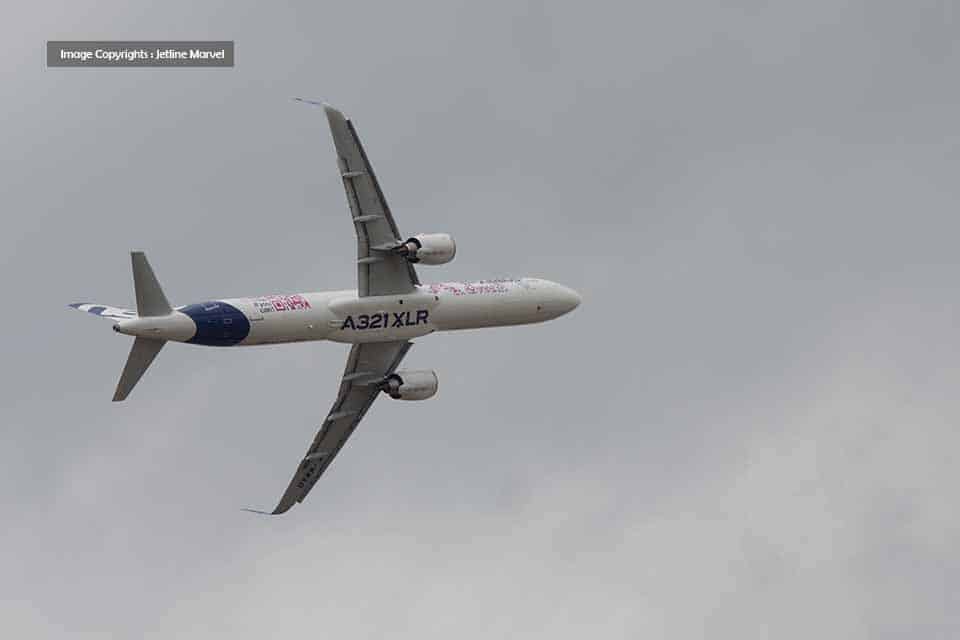Aviation
Airbus A321XLR Reaches Final Phase of Certification Process

Airbus announced that the A321XLR, an ultra-long-range variant of the A320neo family, is now entering the final phase of its type certification campaign. This advanced jet, capable of seating up to 240 passengers, is set to enter service with Iberia by the end of the year.
The A321XLR’s certification and flight-test campaign is nearing its completion. Airbus is focusing on debriefing after recent route-proving flights and ensuring that the first operators have everything necessary for airworthiness compliance and operational support from day one. This preparation includes providing technical documentation, strategic spare parts, and on-site expert support to ensure smooth operations with the longest-range Airbus single-aisle airliner.
For the past four years, teams from Airbus‘ Customer Services department have been integrated into the A321XLR development team. This integration ensures that in-service feedback is incorporated into the aircraft design, and all new components are assessed for potential in-service issues. The close collaboration aims to enhance the maturity of both the aircraft and the supporting procedures, maximizing the aircraft’s availability once it enters airline service.
One of the biggest challenges for the type certification and entry-into-service (EIS) of any new aircraft, including the A321XLR, is providing a full set of accompanying documents known as the “Instructions for Continued Airworthiness” (ICAs). Airworthiness regulations require that 100% of the ICAs be completed at EIS for each aircraft delivery. For the A321XLR, these documents must be submitted by a fixed deadline in the summer of 2024.
A notable feature of the A321XLR is its new extended belly fairing design. This design was introduced following new requirements from the Airworthiness Authorities and incorporates a new material to increase protection to the rear center tank (RCT) in specific crash scenarios, such as a belly landing. In contrast, the belly fairing on the current A321neo primarily serves an aerodynamic function.
In addition to preparing all technical documentation and worldwide strategic spare parts support in advance of entry into service, Airbus is also preparing a team of technical specialists. These experts will be placed within each launch operator for about six months to provide on-site support.

Aviation
Airbus Enhances A350 Cabin with 10-Abreast Seating

Airbus has announced a new partnership with Jiatai Aircraft Equipment, a Chinese aircraft seating manufacturer, to supply upgraded economy-class seats for the A350 widebody series.
This collaboration, unveiled at the 2024 Airshow China, focuses on developing a newly designed economy seat tailored for the A350‘s New Production Standard (NPS) cabin.
One of the key features of the NPS cabin is the ability to accommodate 17-inch wide economy seats, compared to the previous 16.5-inch wide seats that airlines were limited to in the A350’s earlier configurations.
British Airways Unveils Its Brand-New First Class Cabin for the Airbus A380
This change is made possible by the expanded space in the NPS cabin, which is 35 inches longer and 4 inches wider than the previous version. This extra space is achieved by slightly moving the cockpit wall forward and shifting the rear pressure bulkhead back by one frame.
The wider cabin allows airlines to add up to 30 extra economy seats without compromising comfort. For airlines opting for a 3-4-3 seating layout, the 17-inch wide seats are an excellent choice for a more comfortable passenger experience. However, some airlines, such as Iberia, may choose to retain a 9-abreast layout with wider seats for added comfort.
The NPS cabin also offers enhanced flexibility for airline operators. One major advantage is the ability to easily switch between a 9-abreast and 10-abreast seating configuration without requiring significant downtime for aircraft reconfiguration. Airlines can use the same seat rails, tracks, and IFE interfaces, making the transition smoother and quicker.
Etihad Airways Unveils 10 Exciting New Routes for 2025
In addition, the design of the floor attachments and air-conditioning systems has been optimized for 10-abreast seating, meaning airlines can upgrade their cabins without needing to make substantial modifications to the aircraft’s structure.
Though it’s still unclear when Jiatai’s economy-class seats will be officially added to the A350’s Buyer Furnished Equipment (BFE) catalogue, the collaboration marks a significant step toward enhancing the A350’s cabin offerings.
With this partnership, Airbus is providing more seating options for airlines, ensuring that they can meet diverse customer needs while improving overall operational efficiency.
-

 Aviation2 months ago
Aviation2 months agoMicrosoft Flight Simulator Raises $3 Million to Bring Back the An-225 Mriya
-

 Airlines2 months ago
Airlines2 months agoQatar Citizens Can Travel to the United States Without a Visa
-

 Aviation2 months ago
Aviation2 months agoQatar Airways bans these new Electronic Devices on plane
-

 Airlines2 months ago
Airlines2 months agoJapan Airlines Rolls Out Free Domestic Flights to International Passengers
-

 Defence2 months ago
Defence2 months agoWhich Country Has the Largest Fleet of Fighter Aircraft?
-

 Airport2 months ago
Airport2 months agoWestern Sydney Airport Welcomes Its First Plane After 6 Years of construction
-

 Airlines4 days ago
Airlines4 days agoDAMAC Air: Dubai’s New Luxury Airline Offers Free Flights for Registration
-

 Aviation2 months ago
Aviation2 months agoDid you know ? Once Boeing 747 carried 1088 passenger in 1991








